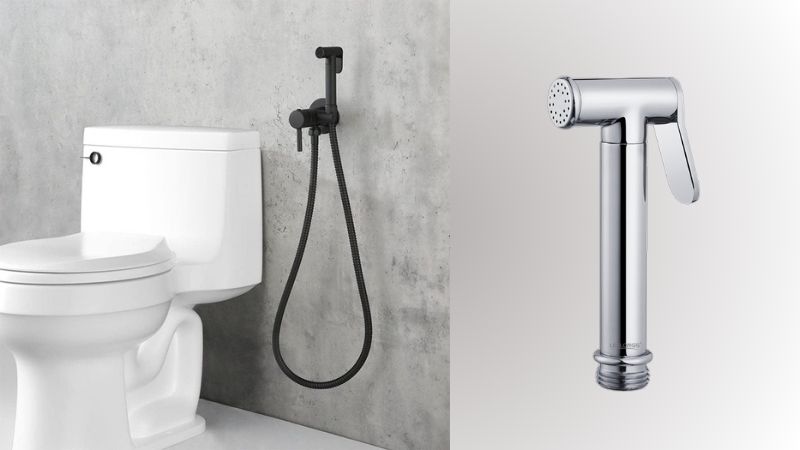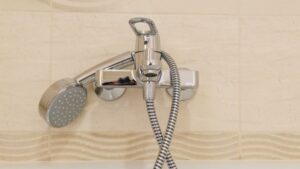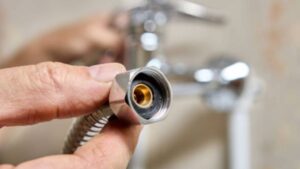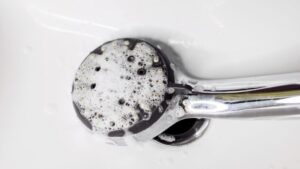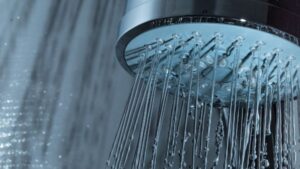Now, bidets are popular in modern bathrooms, yet many people still question whether they are more effective than traditional toilet paper for personal hygiene. Do these water-spraying devices truly offer a cleaner experience, or could they potentially spread bacteria instead?
Bidets are indeed sanitary and often provide better cleanliness than toilet paper alone when used properly. They use a targeted stream of water to clean areas that paper might miss, reducing the potential for bacterial spread and irritation. This direct cleaning method can be especially beneficial for those with certain medical conditions.
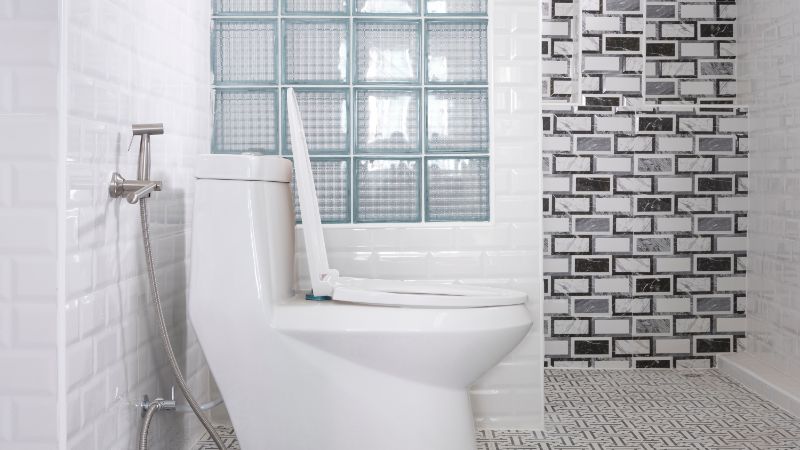
Water cleaning has been used for centuries in many cultures, and modern bidets take this practice to new levels of hygiene and comfort. Today’s models come with features like adjustable water temperature, pressure controls, and even self-cleaning nozzles that maintain cleanliness between uses.
How Does a Bidet Work for Females?
Bidets offer women several hygienic benefits through their targeted cleansing capabilities. The basic operation involves a gentle stream of water directed at the genital and anal areas, eliminating the need for toilet paper.
For female users, most bidets feature specialized settings designed for feminine hygiene. These settings typically adjust the water angle to effectively cleanse the front genital area.
Key features for women include:
- Front wash option (sometimes labeled “feminine wash”)
- Adjustable water pressure control
- Temperature settings for comfort
- Oscillating or pulsating water patterns
Using a bidet as a woman is straightforward. After using the toilet, the user remains seated and activates the front wash function, which directs water at the appropriate angle.
Some advanced bidet models incorporate additional features particularly useful for females. These may include warm air dryers, deodorizers, and even specialized cleansing cycles for menstrual periods.
Benefits of Bidets for Female Hygiene
Bidets offer several advantages for female hygiene. They are a practical addition to any bathroom. Women often experience unique hygiene needs, especially during menstruation or pregnancy, when cleanliness becomes even more important.
Bidets provide gentle yet thorough cleaning that toilet paper alone cannot achieve. The directed water stream effectively removes bacteria and residue, reducing the risk of urinary tract infections (UTIs) and yeast infections.
During menstruation, bidets help women feel fresher and cleaner. They wash away menstrual blood more effectively than wiping, maintaining better hygiene throughout the day.
Bidet health Benefits for Women:
- Reduces UTI frequency
- Decreases yeast infection risk
- Helps prevent bacterial vaginosis
- Soothes irritation from sensitive skin conditions
Many women report reduced irritation and allergic reactions when switching from toilet paper to bidets. This is especially true for those with sensitive skin or conditions like eczema.
The environmental impact shouldn’t be overlooked. Women typically use more toilet paper than men, making bidet use an eco-friendly choice that reduces paper consumption substantially.
Are Bidets Safe and Sanitary for Female Use?
Bidets can be particularly beneficial for female users when used properly. From a medical perspective, bidets are generally considered safe for female anatomy. The directed water stream helps clean external areas without harsh wiping that could cause irritation.

Most modern bidets feature adjustable water pressure settings, allowing women to select the most comfortable and effective cleaning level. This customization helps prevent potential issues that could arise from water pressure that’s too strong.
Important considerations for female users:
- Always clean from front to back to prevent bacteria transfer
- Use gentle pressure settings initially
- Opt for warm water options when available
- Pat dry after use rather than rubbing
Research suggests that bidets may help reduce urinary tract infections in women by providing more thorough cleaning than toilet paper alone. The gentle water spray can effectively remove bacteria without the friction of wiping.
Women experiencing sensitivity due to hormonal changes may find the gentle cleaning of bidets less irritating than dry toilet paper. The moisture can be soothing rather than abrasive.
Bidet Use During Pregnancy and Postpartum Recovery
Pregnancy brings numerous physical changes that can make personal hygiene challenging. Bidets offer expectant mothers a gentle and effective cleaning solution when mobility becomes limited and reaching difficult areas becomes uncomfortable.
Many pregnant women experience increased sensitivity in the perineal area. Bidets provide a soothing alternative to toilet paper, which can cause irritation, especially during the third trimester when pressure and swelling are common.
Bidet benefits during pregnancy include:
- Easier maintenance of hygiene with limited mobility
- Reduced strain from reaching and wiping
- Gentle cleaning for sensitive tissues
- Better management of pregnancy-related constipation
For postpartum recovery, bidets are particularly valuable. After vaginal delivery, the perineal area often experiences significant trauma and sensitivity that can make wiping painful.
C-section mothers also benefit from bidets as they minimize the need to bend and stretch, which can strain incision sites. The gentle water spray helps maintain cleanliness without physical contact that might cause discomfort.
Healthcare providers often recommend bidets for postpartum care. They help soothe hemorrhoids and episiotomy sites while providing thorough cleaning that reduces infection risk.
Postpartum bidet benefits:
- Non-contact cleaning for healing tissues
- Soothing relief for hemorrhoids and stitches
- Improved hygiene during heavy lochia flow
- Reduced pain compared to toilet paper use
Temperature-controlled bidets can offer additional comfort, with warm water providing gentle relief to tender areas during this sensitive time.
Best Practices for Using a Bidet
Proper bidet usage ensures both cleanliness and hygiene. Users should start by using the toilet normally, then transition to the bidet feature for thorough cleaning.
The water pressure should be adjusted to a comfortable level. Starting with a lower pressure is recommended, especially for first-time users, to avoid surprises or discomfort.
Positioning is key for effective cleaning. Most bidets are designed to clean the posterior area, though some models offer front-washing features specifically designed for feminine hygiene.
Water temperature matters for comfort. Warm water provides a more pleasant experience, but it should never be too hot to avoid skin irritation.
Most bidet sessions require only 30-60 seconds of water spray. This is typically sufficient to achieve proper cleanliness without wasting water.
After cleaning, users can pat dry with a small amount of toilet paper or use the air-drying feature if available on their bidet model.
Regular cleaning of the bidet nozzle is essential for maintaining hygiene. Most bidets have self-cleaning features, but occasional manual cleaning with a mild cleanser is recommended.
*For optimal hygiene and convenience, consider high-quality handheld bidet sprayers like Leelongs models. These portable stainless steel sprayers are designed for versatile bathroom hygiene solutions, offering both comfort and durability.
Key Features of Leelongs Bidet Sprayers:
- Ergonomic Grip Design: Comfortable handle for easy control and precise water direction
- Multi-Purpose Functionality: Perfect for personal hygiene, cloth diaper spraying, pet shower, and general cleaning tasks
- Premium Materials: Built with high-quality stainless steel for long-lasting durability and rust resistance
- Simple Installation: Quick and easy setup with included mounting hardware
- Adjustable Water Pressure: Customizable water flow for gentle to powerful cleaning options
Ready to Enhance Your Bathroom Experience?
Contact us for more information about our bidet shower products:
- Request Latest Catalogue: Browse our complete collection of bathroom fixtures
- Product Inquiries: Ask about specifications, installation, and pricing
- Bulk Orders: Special pricing available for wholesale purchases
Fill out our contact form or reach out through our website to learn more about our premium bidet shower solutions. Our team is ready to help you choose the perfect bidet sprayer.
Addressing 5 Common Concerns about Bidets
Many people have reservations about switching from toilet paper to bidets. These concerns often stem from misunderstandings about how bidets work or cultural unfamiliarity.
“I Don’t Feel Comfortable Using Bidets.”
It’s perfectly normal to feel hesitant about trying something new in such a private aspect of life. Most people grow up using toilet paper and haven’t experienced alternatives.
The discomfort is usually temporary. Many users report feeling strange during their first few uses, but quickly adapt and eventually prefer the cleaner feeling bidets provide.
Starting with a gentle water pressure setting can help ease the transition.
“I Think Bidets are Messy.”
This is a common misconception. Modern bidets are specifically engineered to prevent splashing and mess.
The water stream is precisely directed to clean only the intended area. The nozzles on electric bidets retract when not in use, keeping them clean and sanitary. Most bidet attachments and seats also include self-cleaning functions that rinse the nozzles before and after each use.
After using a bidet, you only need a small amount of toilet paper to pat dry, or can use the warm air dryer feature found on premium models.
“Toilet Paper is Cheaper Than Using a Bidet.”
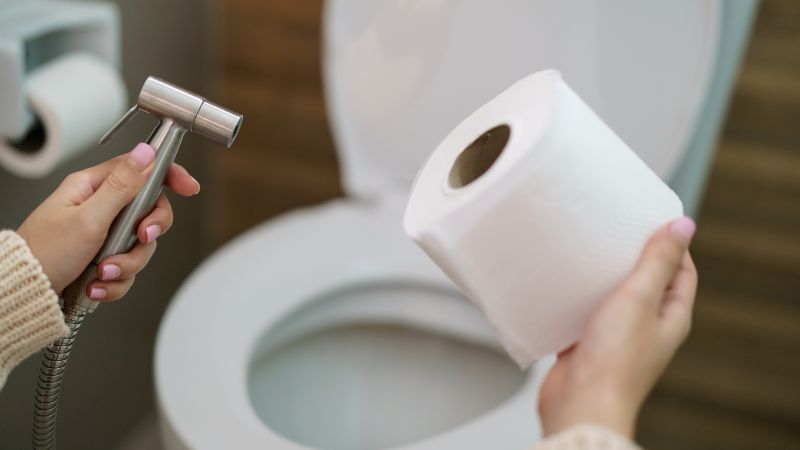
While bidets require an initial investment, they typically save money over time. The average American uses about 100 rolls of toilet paper annually, costing $100-$200 per year.
A basic bidet attachment costs $30-$100 and can last for years. Even premium electric bidet seats ($200-$600) pay for themselves over time through reduced toilet paper usage.
Bidets reduce toilet paper use by 75-100%, depending on the model and whether it includes a drying feature. This reduction means fewer clogged pipes and plumbing issues.
The environmental cost is also worth considering. Toilet paper production consumes approximately 15 million trees and 473 billion gallons of water annually in the U.S. alone.
“My Bathroom is Too Small for a Bidet.”
Space concerns are easily addressed with modern bidet options. Traditional standalone bidets that require extra bathroom space are no longer the only option.
Bidet attachments and toilet seats fit directly onto existing toilets without requiring additional floor space. These range from simple non-electric attachments to feature-rich electric seats.
Handheld bidet sprayers (similar to kitchen sink sprayers) can be installed next to the toilet and take up minimal space. These are particularly good solutions for very small bathrooms.
Travel bidets are portable bottle-like devices that can be used anywhere. They’re perfect for small spaces or for maintaining bidet habits while traveling.
“Can I Use Soap in the Bidet Water?”
Water alone is remarkably effective at cleaning the anal area. The directed water spray physically removes waste particles more effectively than wiping with dry paper.
Adding soap to bidet water isn’t recommended for most bidets. It could damage internal components and potentially irritate sensitive skin in the perianal region.
For those wanting extra cleanliness, many bidets offer specialized features. Some premium models include deodorizing functions or even UV sterilization of the nozzles.
If desired, gentle cleansing wipes designed for sensitive areas can be used occasionally. However, most bidet users find that water cleaning alone provides superior hygiene to toilet paper.

